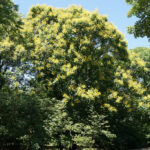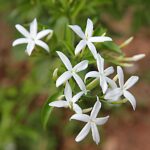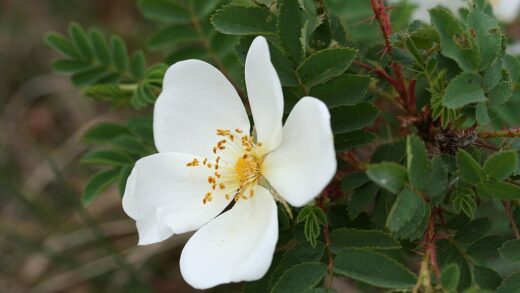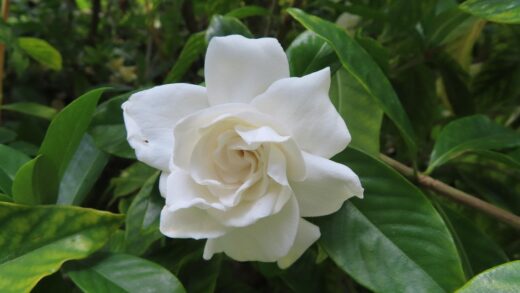Despite its reputation as a vigorous and hardy herb, peppermint is not entirely immune to the challenges posed by various diseases and pests. A vigilant gardener who knows what to look for can often catch these problems early, preventing them from causing significant damage to the plant’s health and harvest. Understanding the most common ailments that affect mint, from fungal infections to sap-sucking insects, is the first step toward implementing effective and often organic management strategies. Maintaining a healthy, stress-free plant through proper care is always the best defense, as robust plants are naturally more resilient to attack.
Fungal diseases are among the most prevalent issues for peppermint, largely because the plant thrives in the moist conditions that fungi also favor. Mint rust is perhaps the most notorious of these, capable of significantly weakening the plant and ruining the foliage. Powdery mildew and leaf spot diseases can also occur, particularly when plants are overcrowded and air circulation is poor. These diseases often manifest as visible spots, powders, or lesions on the leaves, and if left unchecked, they can spread rapidly throughout a mint patch, reducing both the yield and the quality of the leaves.
On the pest front, peppermint’s strong scent can deter many common garden pests, but several have adapted and can become a nuisance. Aphids, spider mites, and flea beetles are some of the most common insect pests you might encounter. These pests typically cause damage by piercing the plant’s tissues and sucking out the nutrient-rich sap, leading to distorted growth, stippled or yellowing leaves, and a general decline in the plant’s vigor. Heavy infestations can significantly impact the health of your mint and require intervention.
The key to managing these potential problems lies in an approach known as Integrated Pest Management (IPM). This strategy emphasizes prevention and monitoring, relying on cultural practices and biological controls first, and turning to chemical treatments only as a last resort. Providing good air circulation by spacing plants appropriately, watering at the base of the plant to keep foliage dry, and promptly removing any diseased plant material are simple yet powerful preventative measures. Regularly inspecting your plants allows you to spot issues early when they are much easier to control.
Common fungal diseases
One of the most serious diseases to affect peppermint is mint rust, caused by the fungus Puccinia menthae. This disease is highly specific to mint family plants and can be quite destructive. The first signs are small, bright orange, yellow, or brown powdery pustules that appear on the undersides of the leaves and on the stems. As the disease progresses, the leaves may become yellow, distorted, and eventually fall off, severely weakening the plant. The fungus thrives in cool, damp conditions and can overwinter on infected plant debris, making its management crucial for the long-term health of your mint patch.
More articles on this topic
Powdery mildew is another common fungal issue that can affect peppermint, especially in humid weather or when plants are grown in shady, crowded conditions with poor air circulation. This disease is easily identified by the characteristic white, powdery patches that appear on the surface of the leaves, stems, and sometimes the flowers. While it may not be as destructive as rust, a severe infection can interfere with photosynthesis, stress the plant, and reduce the overall quality and flavor of the leaves. It is most prevalent during periods of warm days followed by cool, damp nights.
Leaf spot diseases, caused by various types of fungi, can also trouble peppermint plants. These typically manifest as small, dark spots (often brown or black) on the leaves, which may sometimes have a yellow halo around them. As the disease advances, these spots can enlarge and merge, causing large portions of the leaf to die and drop from the plant. Like other fungal diseases, leaf spot is favored by wet conditions and splashing water, which helps to spread the fungal spores from one leaf to another and from plant to plant.
Preventing these fungal diseases is always more effective than trying to cure them. The most important preventative measure is to ensure good air circulation around your plants by giving them adequate spacing and dividing overgrown clumps. Always water peppermint at the soil level using a soaker hose or drip irrigation to keep the foliage as dry as possible. If you do spot a fungal disease, promptly remove and destroy all infected leaves and stems to prevent it from spreading. In the case of a severe rust infection, it is often best to cut the entire patch down to the ground and dispose of the infected material, allowing new, healthy shoots to regrow from the roots.
Identifying and treating mint rust
Mint rust is a particularly persistent and damaging fungal disease, and early identification is key to managing it effectively. The cycle often begins in the spring with the appearance of thickened, distorted, and pale shoots emerging from the ground. These primary shoots are systemically infected with the fungus. Soon after, the more recognizable symptoms appear: small, raised, dusty pustules of a bright orange or brownish color on the undersides of the leaves. These pustules contain the fungal spores that are easily spread by wind, splashing water, or on tools and hands.
More articles on this topic
As the season progresses, the pustules may change color, turning yellowish and then black later in the autumn. The infected leaves will often turn yellow, shrivel, and drop prematurely, significantly reducing the plant’s ability to photosynthesize and store energy. A severe infection can decimate a mint patch, making the leaves unusable and severely weakening the plant’s root system, which can impact its ability to survive the winter. Because the fungus can overwinter in infected rhizomes and plant debris, it can become a recurring problem year after year if not properly managed.
Treatment for mint rust focuses primarily on sanitation and cultural control, as fungicides are often not recommended for edible herbs. As soon as you spot the first signs of rust, prune off and destroy all infected plant parts immediately. Do not add this material to your compost pile, as the fungal spores can survive and spread. In early spring, be vigilant for the pale, distorted shoots and remove them as soon as they appear to prevent the disease cycle from starting. For heavily infected patches, the most drastic but effective measure is to cut the entire plant down to the ground and carefully clean up all fallen debris from the soil surface.
To prevent future outbreaks, focus on creating an environment that is less favorable to the fungus. Improve air circulation by thinning out your mint patch or dividing it if it has become too dense. Avoid overhead watering to keep the leaves dry. Some gardeners have found success by immersing the dormant mint roots in hot water (around 44°C or 111°F) for ten minutes before replanting them in a new, clean location. This can kill the overwintering fungus within the rhizomes without killing the plant, but it is a delicate procedure that requires careful temperature control.
Common insect pests
While peppermint’s strong oils repel many insects, several pests can still become problematic. Aphids are small, pear-shaped, sap-sucking insects that often cluster on new growth and the undersides of leaves. They can be green, black, or other colors, and their feeding can cause leaves to curl, yellow, and become distorted. As they feed, aphids excrete a sticky substance called honeydew, which can lead to the growth of sooty mold and attract ants. A small infestation can quickly multiply, so early detection is important.
Spider mites are another common pest, especially in hot, dry conditions. These tiny arachnids are difficult to see with the naked eye, but their damage is quite noticeable. They use their piercing mouthparts to suck the contents out of plant cells, leading to a fine, whitish or yellowish stippling on the leaves. In heavy infestations, you may see fine webbing on the plant, particularly between the leaves and stems. An affected plant will look faded and unhealthy, and its growth will be stunted.
Flea beetles are small, dark beetles that get their name from their ability to jump like fleas when disturbed. They chew numerous small, round “shot holes” in the leaves, which can make the foliage unsightly and, in large numbers, can skeletonize the leaves. Their damage is most severe on young plants and seedlings. While mature, healthy peppermint plants can usually withstand some flea beetle damage, a large population can be a significant problem, particularly in the spring.
Cutworms can also pose a threat, especially to young peppermint plants. These are the larvae of certain moths, and they live in the soil, emerging at night to feed. They typically chew through the stems of young plants at or near the soil line, cutting the plant down. If you find a newly transplanted mint seedling has been felled overnight, a cutworm is the likely culprit. Protecting the base of young plants with a small collar made from cardboard or plastic can be an effective deterrent.
Integrated pest management strategies
Integrated Pest Management (IPM) is a sustainable and common-sense approach to controlling pests and diseases in the garden. The first line of defense is always cultural control. This involves creating a healthy growing environment that naturally discourages pests. For peppermint, this means ensuring proper spacing for good air circulation, watering at the soil level to keep leaves dry, and keeping the area free of weeds that can harbor pests. A healthy, well-watered, and properly fed plant is inherently more resistant to attacks.
The next step in IPM is regular monitoring. Make it a habit to inspect your peppermint plants closely at least once a week. Check the undersides of leaves, the stems, and the growing tips for any signs of insects or disease. This vigilance allows you to catch problems at their earliest stages when they are much easier to manage. For example, a small colony of aphids can often be dealt with by simply wiping them off with your fingers or blasting them with a strong jet of water from a hose.
If pests are present in numbers that warrant action, turn to biological and mechanical controls first. You can encourage beneficial insects like ladybugs, lacewings, and predatory wasps, which are natural predators of aphids and other pests. You can attract these garden allies by planting a diversity of flowering plants. Mechanical controls include hand-picking larger pests or using physical barriers. For flea beetles, for instance, a floating row cover placed over the plants in spring can prevent the beetles from reaching them.
Only as a last resort should you consider using pesticides, and if you do, choose the least toxic option first. Insecticidal soaps and horticultural oils are effective against soft-bodied insects like aphids and spider mites. These products work by smothering the pests and have a low impact on beneficial insects and the environment. Always apply these treatments in the evening or on a cloudy day to prevent leaf scorch and follow the label instructions carefully, especially since peppermint is an edible herb.


















